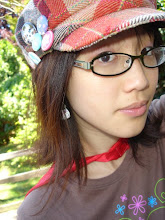Monday, July 23, 2012
Reply received from Psychology Panel Expert
Ms. Lan,
The push for zero waste in San Francisco is certainly a great goal for the city to work towards, and hopefully with the implementation of ideas such as yours, this goal will get closer to becoming a reality in the not so distant future. Perhaps the integration of several of your ideas would be a more cohesive sort of city-wide program. Several of your ideas could compliment each other and bring attention to the movement in a variety of ways, undoubtedly reaching several different demographics within the city’s population.
Considering the size and diversity of a large city like San Francisco, I would absolutely agree that the use of a color-coded sorting system would be one of the most fundamental steps towards a more proactive city-wide stance on zero waste. With color-coded bins mandated by the city, I think a more repetitive acknowledgement of “green = recycling”, “red = compost”, “blue = disposable garbage” would become second nature to individuals. And if color-coding were adopted by the city, it could be enforced by city waste workers only picking up the correctly color coded bins.
As for the confusion of certain materials being inappropriately sorted, maybe you can bring some of those elements into your other ideas (i.e. make a segment of the animation focus on commonly incorrectly sorted materials)?
Your idea on pop-culture reference posters is also something that would definitely grab the attention of those within younger demographics. Similar to the Celebrity READ campaign developed by the American Library Association, the city or state-wide campaign would be eye-catching, conversational, topical, and would reinforce the larger picture of the movement. Perhaps a way around the potential copyright issues would be for city or state officials to contact those who own the rights to said products or trademarks, and if they are not cooperative then find other endorsements? Maybe celebrity endorsements like those in the READ campaign that allude to what the celebrity is known for without outright portraying it (like the READ campaign’s Twilight references?)
I think the idea for a stop-motion animation would be very effective, especially if more alternative versions could be condensed to for commercials. The full-length animation could be shown as part of educational programming on local stations, could be used within the school system at the appropriate grade levels, and would be a great educational tool that may make kids more invested in doing their part in appropriate waste management.
The issue with a smart phone game may be the issue of development, which has to go through a rigorous procedure before being put in the Apple AppStore. The length and time that would have to go into development might not be worth the fleeting interest users may potentially have with the sorting game, but it could nonetheless be another tool in the larger scope of the proposed zero waste program. A positive thing to note about the app is that it would be the only proposed “interactive” type of marketing where users could test their knowledge about the intricacies of sorting waste (like the type of issues that you brought up in your first point).
All in all, I think your ideas are something that should definitely be considered in a city or state-wide program that would undoubtedly make the step towards zero-waste that much more achievable. Please email me if you have any more questions and best of luck with your thesis.
Meghan H.



0 comments:
Post a Comment